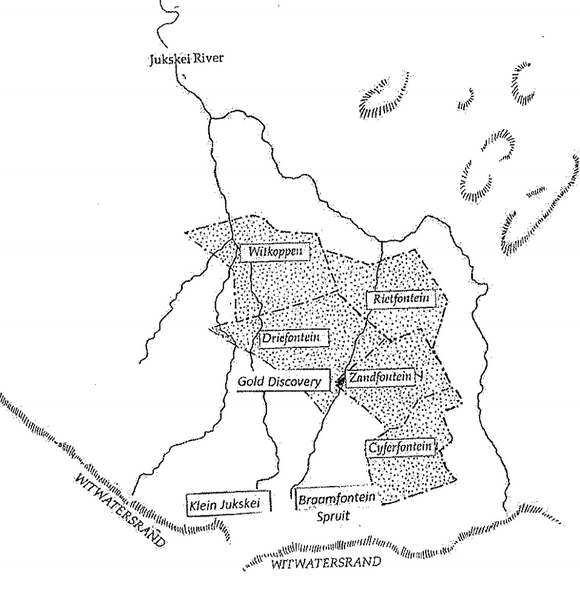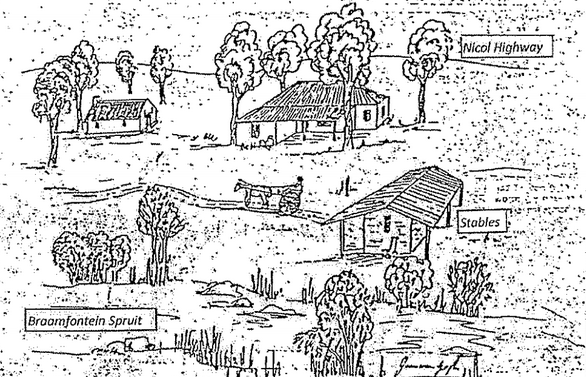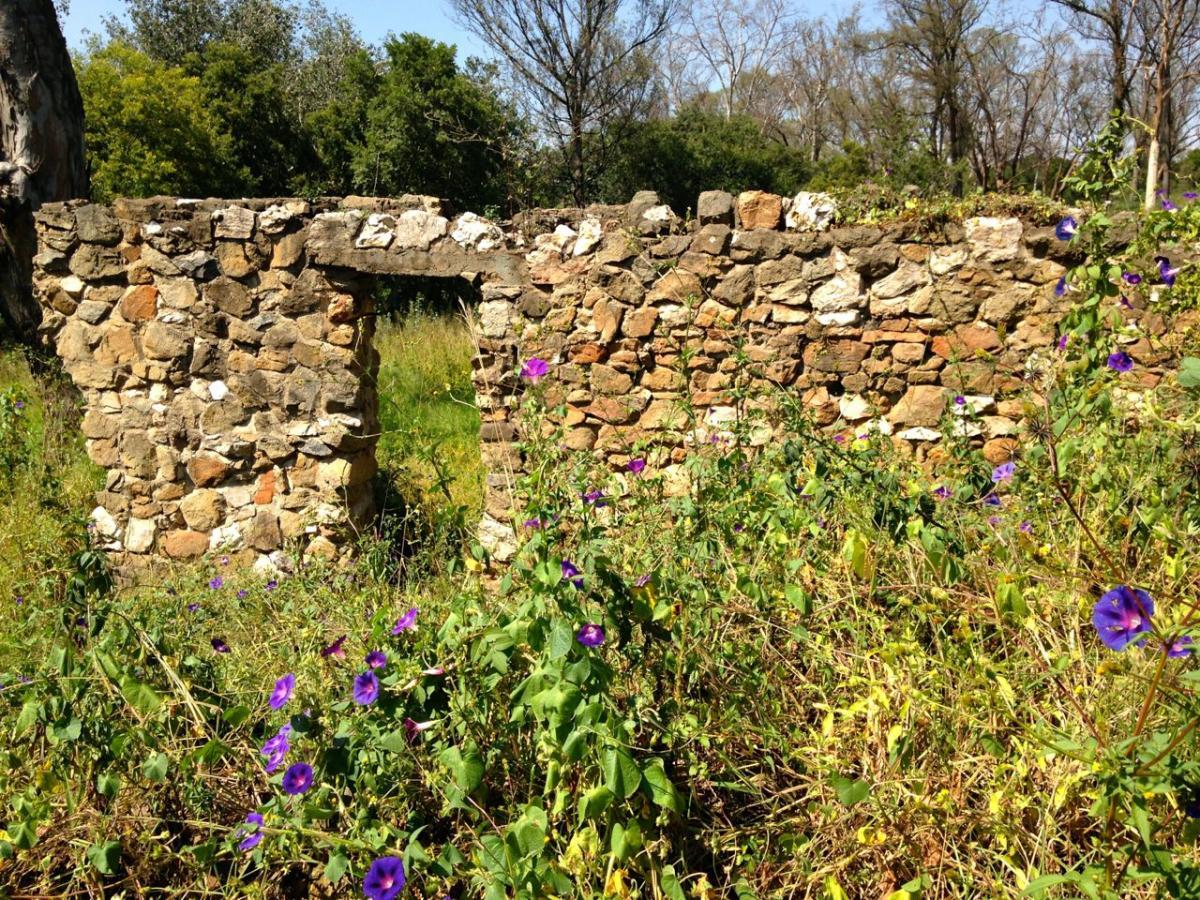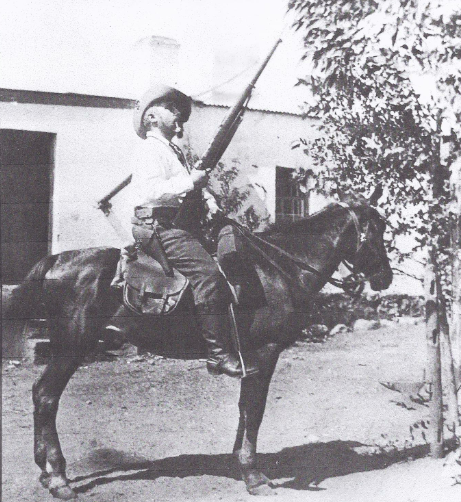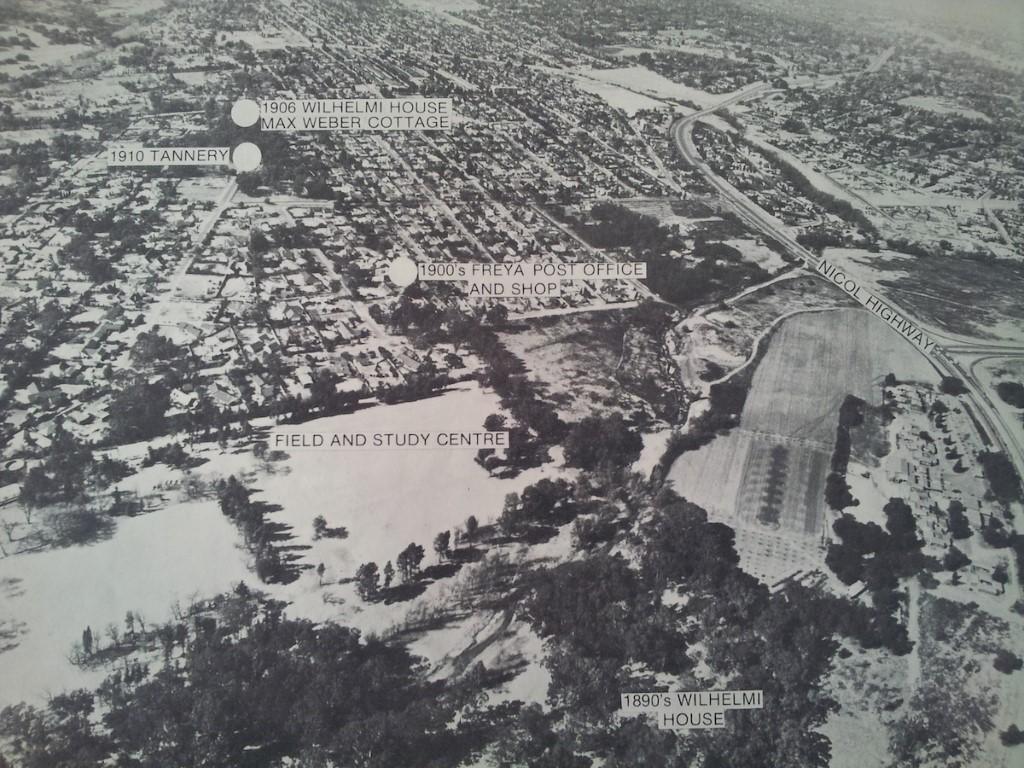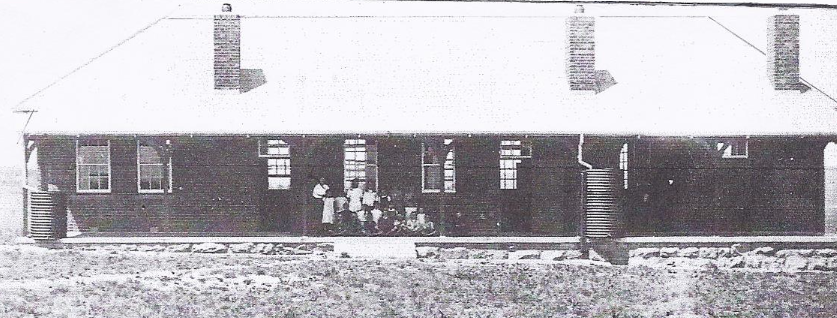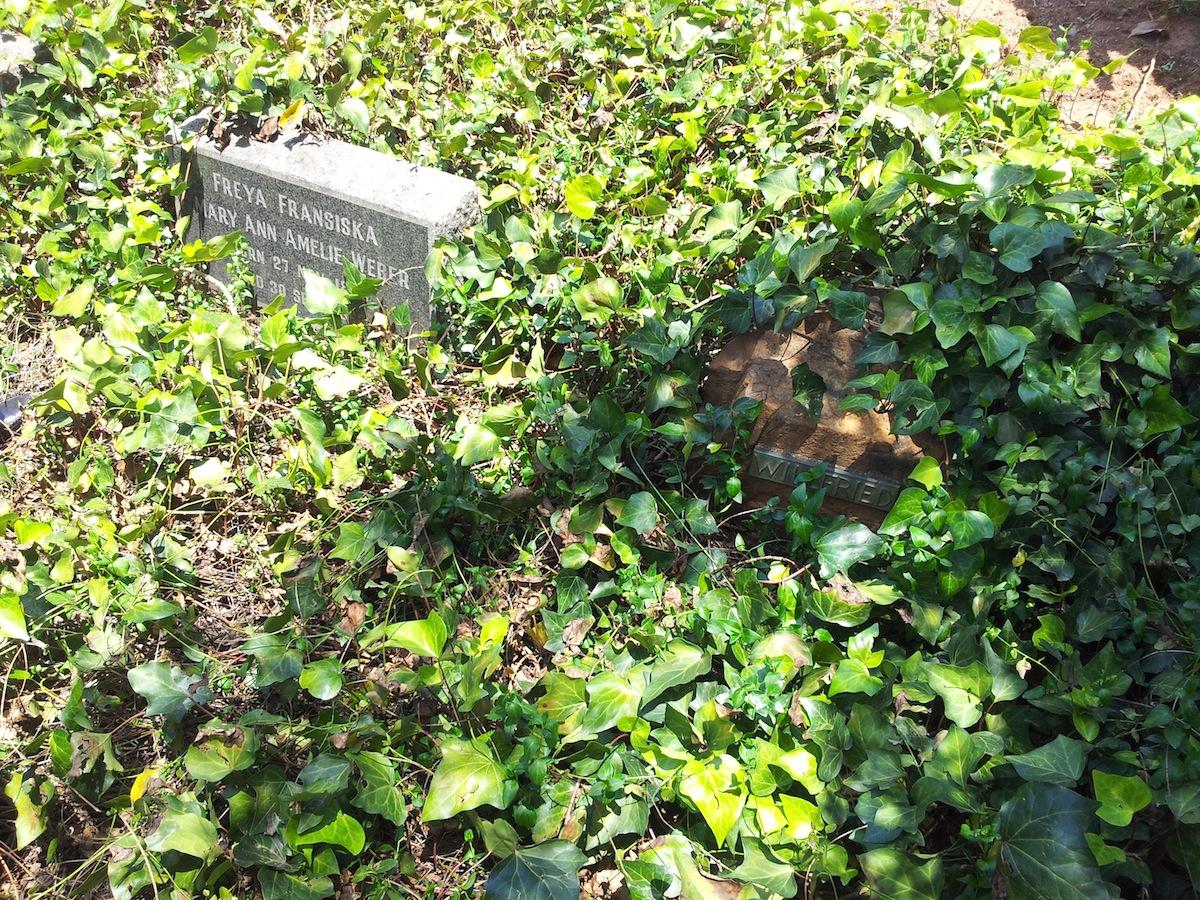Disclaimer: Any views expressed by individuals and organisations are their own and do not in any way represent the views of The Heritage Portal. If you find any mistakes or historical inaccuracies, please contact the editor.
[Originally published in 2014] This wonderful article, written by Malcolm Wilson, describes the journeys of early hunters, settlers and prospectors as well as the development of Driefontein Farm on land which is now just a few kilometres from 'Africa's richest square mile'.
Early Settlers and Prospectors
The history of Panners Lane and Driefontein Farm is connected to the arrival of the earliest hunters, settlers and prospectors who crossed the Vaal River in the 1830s and 1840s.
In 1834 Carel Krige, a hunter, is said to have discovered alluvial gold in the Jukskei River near the confluence of the Crocodile River. This was technically the first discovery of alluvial gold on the Witwatersrand.
In the 1840s ownership of farms was undocumented and rudimentary allocations were made by the initial South African Republic the capital of which was Potchefstroom.
Amongst the allocated farms was Driefontein Farm owned by LP van Vuuren and Zandfontein Farm owned by Pieter Nel and later JC Esterhuizen.
In 1852, gold was found on the Witwatersrand by the Welsh geologist John Henry Davis on the farm Paardekraal (Krugersdorp). The find was kept secret by the government to avoid a possible influx of prospectors and Davis was deported from the boer republic.
In 1853 a prospector Pieter Jacobus Marais travelling between Potchefstroom and what is now Pretoria, found traces of alluvial gold at the confluence of the Crocodile and Jukskei Rivers. Later the same year, he stopped to pan for gold in the Klein Jukskei River today the Braamfontein Spruit.
Marais kept a journal of his activities and in the entry dated 9 October 1853, he wrote: "Found some gold at Piet Nel's on the Klein Jukskei River."
According to research by Dr Jane Carruthers, the farm concerned was Zandfontein Farm which was owned by Nel at the time. Zandfontein Farm (now Sandton central) had a very short frontage along the Klein Jukskei (Braamfontein Spruit). The gold find by Marais was therefore close to where the Nicol Highway bridge crosses the Braamfontein Spruit (see map below).
Map showing the portion of Zandfontein where gold was found
Marais reported his find to the Volksraad but history is silent about the result. It is believed that he was ordered to keep the find secret in case the hated "uitlanders" (foreigners) moved in to exploit the opportunity. Unlike Davis, Marais was not deported.
It is recorded that the quantity of gold found by Marais soon ran dry.
The main reef of the Witwatersrand was only found in 1886 by George Harrison.
In order to appreciate Panners Lane's origins, one needs to examine the well documented history of Driefontein Farm.
History of Driefontein Farm
The first farmers to settle in the Transvaal allocated large farms to themselves which were ill defined. In order to demarcate a farm the owner selected a point and measured the next point whilst riding a horse at walking pace for 1½ hours. He would then walk a further 1½ hours at right angles to establish the third point.
The original Driefontein Farm established in the 1840s included most of what is today Riverclub (including the golf course), Bryanston and Randburg.
Driefontein Farm was first owned by LP van Vuuren and then purchased by JJC Erasmus and thereafter by Johannes Lodewikus Pretorius.
The Deeds Office in Pretoria was first established in 1859.
Pretorius became the first owner officially registered by the Deeds Office in Pretoria.
Pretorius came into possession of 3422 morgen (2931 ha), stretching from the present suburbs of Witkoppen to Craighall. The three springs (drie fontein) suggested by the name, have not been located but it is known the Braamfontein Spruit ran through the original property.
According to research by Carruthers, Pretorius sold approximately 894 morgen (the south-eastern part of Bryanston), to Antonie Smit in 1877. Pretorius continued to farm the remaining portion.
When Pretorius died in 1888, the farm was divided amongst his nine sons, each of them paying ₤60 for a 280 morgen share. The value of the land had risen considerably since 1886 when gold was first mined on the Witwatersrand and Johannesburg established.
In 1890, one of the Pretorius sons Gerhadus Jacobus, bought his brothers' portions and consolidated the farm again. But as the town spread northwards, he began to sell off portions, one of which was bought by Herbert Gladstone Nolan.
In 1893 Nolan sold 51 morgen to adventure-seekers and recently married Adolf and Elsa Wilhelmi who had arrived in Johannesburg from Germany in 1891.
Elsa Wilhelmi was born in 1871 in Germany and came from an old aristocratic family.
The Wilhelmi's first house was a corrugated iron shack on the Forest Farm side of the Braamfontein Spruit. They later built a stone house near a bend in the river.
The house was located close to what is now the Nicol Highway and immediately west of the stables of which the stone walls are still standing (see drawing below).
A composite of the now destroyed first Wilhelmi farmhouse and stables
Remains of the Stables (The Heritage Portal)
In 1899, the family sub-divided their land and sold 9.56 morgen to the Salvation Army. The property was later taken over by the Transvaal Association for the Care of Cerebral Palsied (TACCP) who established Forest Farm in the 1980s. A portion of their property was sold to Pick 'n Pay in the early 2000s for the development of a supermarket.
The Wilhelmis also sold 42 morgen to Ralph Sandilands Arderne. He was known as Dunny and was a good family friend of the Wilhelmi's. He had in the past helped Wilhelmi acquire the farm Driefontein 3. Arderne lived on Driefontein for years and died in 1935.
When the Wilhelmi's daughter Freya was a baby Arderne gave her a gift of 2 morgen of land on the Forest Farm side of the river.
During the South African War of 1899 - 1902, Adolf joined a Boer commando under the command of General De La Rey. He was later captured by the British and given the choice of being sent as a prisoner to St Helena or South America. He requested transfer to Germany and to his surprise his wish was granted.
Adolf heading off on Commando
In the meantime, Elsa had abandoned the farm and travelled to Germany in 1902 with their daughter Freya and their new born son Willfried. Elsa and Adolf were reunited in Hanover.
On their return from Germany after the war, they found their house burnt out and all the furniture gone, much of which they recognised in other houses in the area.
The Wilhelmis became tenants on their previous farm courtesy of Arderne. In 1906, says Carruthers, Arderne generously gave them back almost half the land (some 20 morgen) he had bought from them in 1899.
Adolf dammed a section of the Braamfonten Spruit, below what is now the Field and Study Centre house. The dam became a favourite picnic spot for the German community of Johannesburg.
The Wilhelmis built Driefontein Farmhouse in its present location on the corner of 15th Street, Parkmore and Coleraine Drive in 1906.
Vandalised Signage at the Entrance to Driefontein Farm (The Heritage Portal)
The Wilhelmis planted many hectares of wattle trees for tannin extract. A tannery, first established in 1910 was located at what is now the corner of 15th St and Genia Ave in Sandhurst Ext 4. The tannery moved in the 1920s alongside the Braamfontein Spruit near the crossing what is now the Nicol Highway (built in 1956). The tannery, later partially owned by Norman Berg, was demolished in 1984 and the land became the suburb of New Brighton adjoining Parkmore.
The Buildings of Driefontein Farm
Apart from wattles, the Wilhelmis planted many fruit trees and vegetables which were sold in the market of the growing town of Johannesburg.
The foreman of their farm was Ernest George Wright. George and his wife Christina moved into the Wilhelmi's old stone house in 1908. Christina's brother was the owner of one of the first cars in Johannesburg and brought it to Driefontein Farm. He was probably the first person to drive a car on what was to become Panners Lane.
Elsa and Adolf had 7 children. The first was stillborn, followed by Freya Franziska Mary-Anne, Norman who died at the age of 3 and Willfried who were born before the South African War. Erwin, Ursula and Ulrich (known as Tickey) were born after the family returned to South Africa.
Most of the Wilhelmi children attended the Driefontein School which was built in what is now Parkmore in 1912. It is not known when the school closed.
Driefontein School
As a child, Freya was taught by her mother and was sent to the German School in Johannesburg at the age of 12. But she was so homesick that her father brought her home and she never went to school again
Adolf died in 1925 in Kimberley, by which time he was legally separated from Elsa.
Elsa died in 1948 and her and other gravestones are located at Driefontein Farmhouse.
Wilhelmi gravestones below the old farmhouse (The Heritage Portal)
Comments will load below. If for any reason none appear click here for some troubleshooting tips. If you would like to post a comment and need instructions click here.

